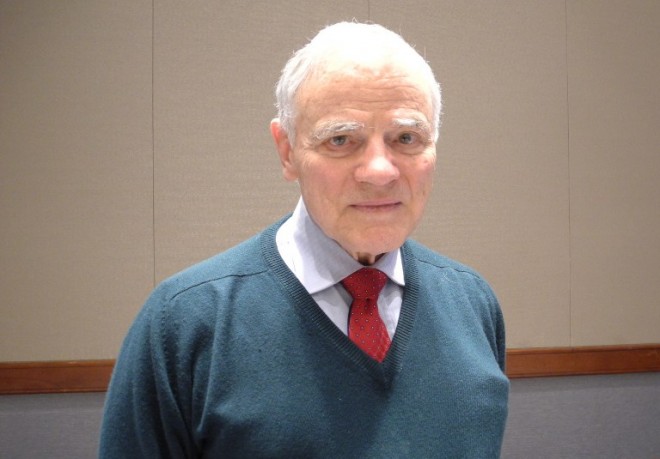
CHICAGO — One hundred people are about to share their live bodies for science as part of an unprecedented new study that will examine how to improve personal health, researchers said Friday.
The Hundred Person Wellness Project, which begins in March, will require round-the-clock monitoring of its subjects, who are presumed healthy at the time of enrollment.
Scientists will start by sequencing the entire genome of each participant. Then, for the next 25 years, they will take regular measurements of sleep patterns, heart rate, gut bacteria, proteins that track organ health, blood samples, immune cell activity and more.
“What is unique about humans is their individuality,” said Leroy Hood at the American Association for the Advancement of Science annual meeting.
The idea is to “actually follow the transition of the heart, brain and liver from wellness to disease,” said Hood, president of the Institute for Systems Biology in Seattle, Washington.
The focus of the nine-month pilot program — which aims to expand to 100,000 people within the next four years and continue monitoring for up to three decades — is on ways to improve individual wellness based on each person’s unique makeup.
Hood said scientists will be on the hunt for “actionable opportunities for each individual,” such as how they could change their nutrition to improve their health or avoid certain drugs that might be dangerous given their genetic makeup.
Hood’s institute has budgeted about $10,000 per participant and is paying for the research through private donations, according to a report in Nature magazine this week that described the project as “unusually thorough.”
It has also defied many of the conventions of clinical trials by doing away with any control group against which to compare results, and by planning to intervene on a personal basis with subjects as the study is ongoing.
You would want to know
As an example of how such intervention might work, Hoods mentioned a friend who suddenly realized he had severe osteoporosis at the age of 35.
The friend had his DNA analyzed and discovered he had a defect in a major calcium transporter. Soon after, he began taking calcium supplements and is now in good health five years later.
“If you had that condition, you would want to know about it before you got osteoporosis,” said Hood.
About 70 of the first 100 people for the project have already been chosen from a pool of “local people, friends and things like that,” said Hood.
Their ages range from 21 to 71, and most are between 40 and 60 years old.
But more people from all walks of life are needed for the next phase of the study as it grows.
Diversity is an “incredibly important part of this,” Hood said.
The data will be anonymized and made available to qualified investigators so that they can determine wellness metrics for the first time.
Another key activity will be mining for wellness-to-disease transitions and looking for very early changes that could signal approaching illness.
In an era where personal monitoring of health via smart pedometers is already booming, Hood predicted that the data his project uncovers will be a boon to commercial investors.
“It is going to be a Silicon Valley-like opportunity,” he said.